I am trying to use Roslyn to identify the symbol behind a method group reference. This worked fine using SemanticModel.GetSymbolInfo in earlier versions of Roslyn, but in the latest version no symbol is found. What is the right way to perform this mapping?
var ws = new AdhocWorkspace();
var proj = ws.AddProject("test", "C#")
.AddMetadataReference(MetadataReference.CreateFromFile(typeof(object).Assembly.Location));
proj = proj.WithParseOptions(proj.ParseOptions.WithFeatures(new Dictionary<string, string> { { "IOperation", "true" }}));
var doc = proj.AddDocument("test.cs", SourceText.From(@"namespace Test {
public class Program
{
public static void Main()
{
Func<int> x = Foo; // want to map Foo to one of the methods below!
}
private static int Foo() => 7;
private static int Foo(int x) => 8
}
}"));
proj = doc.Project;
var compilation = proj.GetCompilationAsync().Result;
var tree = doc.GetSyntaxTreeAsync().Result;
var model = compilation.GetSemanticModel(tree);
var fooToken = tree.GetRoot().DescendantTokens()
.First(t => t.Text.ToString() == "Foo");
Console.WriteLine(model.GetSymbolInfo(fooToken.Parent).Symbol); // null
Console.WriteLine(model.GetMemberGroup(fooToken.Parent).Length); // 2
As the example, shows GetMemberGroup does return results, but it returns results for both Foo() methods rather than the specific one I'm referencing.
How can I extract the exact referenced symbol?


